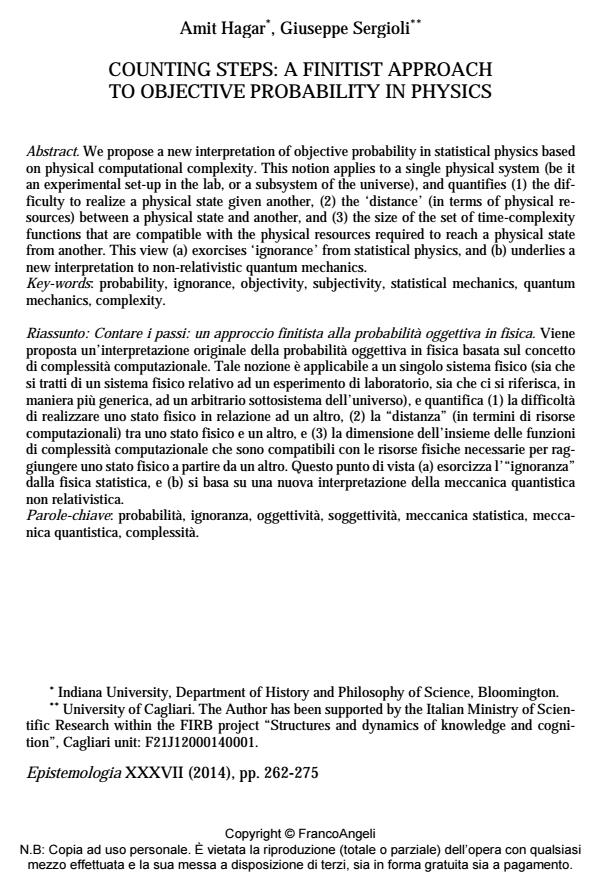Counting steps: a finitist approach to objective probability in physics
Titolo Rivista EPISTEMOLOGIA
Autori/Curatori Amit Hagar, Giuseppe Sergioli
Anno di pubblicazione 2015 Fascicolo 2014/2
Lingua Inglese Numero pagine 14 P. 262-275 Dimensione file 96 KB
DOI 10.3280/EPIS2014-002006
Il DOI è il codice a barre della proprietà intellettuale: per saperne di più
clicca qui
Qui sotto puoi vedere in anteprima la prima pagina di questo articolo.
Se questo articolo ti interessa, lo puoi acquistare (e scaricare in formato pdf) seguendo le facili indicazioni per acquistare il download credit. Acquista Download Credits per scaricare questo Articolo in formato PDF

FrancoAngeli è membro della Publishers International Linking Association, Inc (PILA)associazione indipendente e non profit per facilitare (attraverso i servizi tecnologici implementati da CrossRef.org) l’accesso degli studiosi ai contenuti digitali nelle pubblicazioni professionali e scientifiche
We propose a new interpretation of objective probability in statistical physics based on physical computational complexity. This notion applies to a single physical system (be it an experimental set-up in the lab, or a subsystem of the universe), and quantifies (1) the difficulty to realize a physical state given another, (2) the ‘distance’ (in terms of physical resources) between a physical state and another, and (3) the size of the set of time-complexity functions that are compatible with the physical resources required to reach a physical state from another. This view (a) exorcises ‘ignorance’ from statistical physics, and (b) underlies a new interpretation to non-relativistic quantum mechanics.
Parole chiave:Probability, ignorance, objectivity, subjectivity, statistical mechanics, quantum mechanics, complexity.
- Quantum, Probability, Logic Amit Hagar, pp.305 (ISBN:978-3-030-34315-6)
Amit Hagar, Giuseppe Sergioli, Counting steps: a finitist approach to objective probability in physics in "EPISTEMOLOGIA" 2/2014, pp 262-275, DOI: 10.3280/EPIS2014-002006